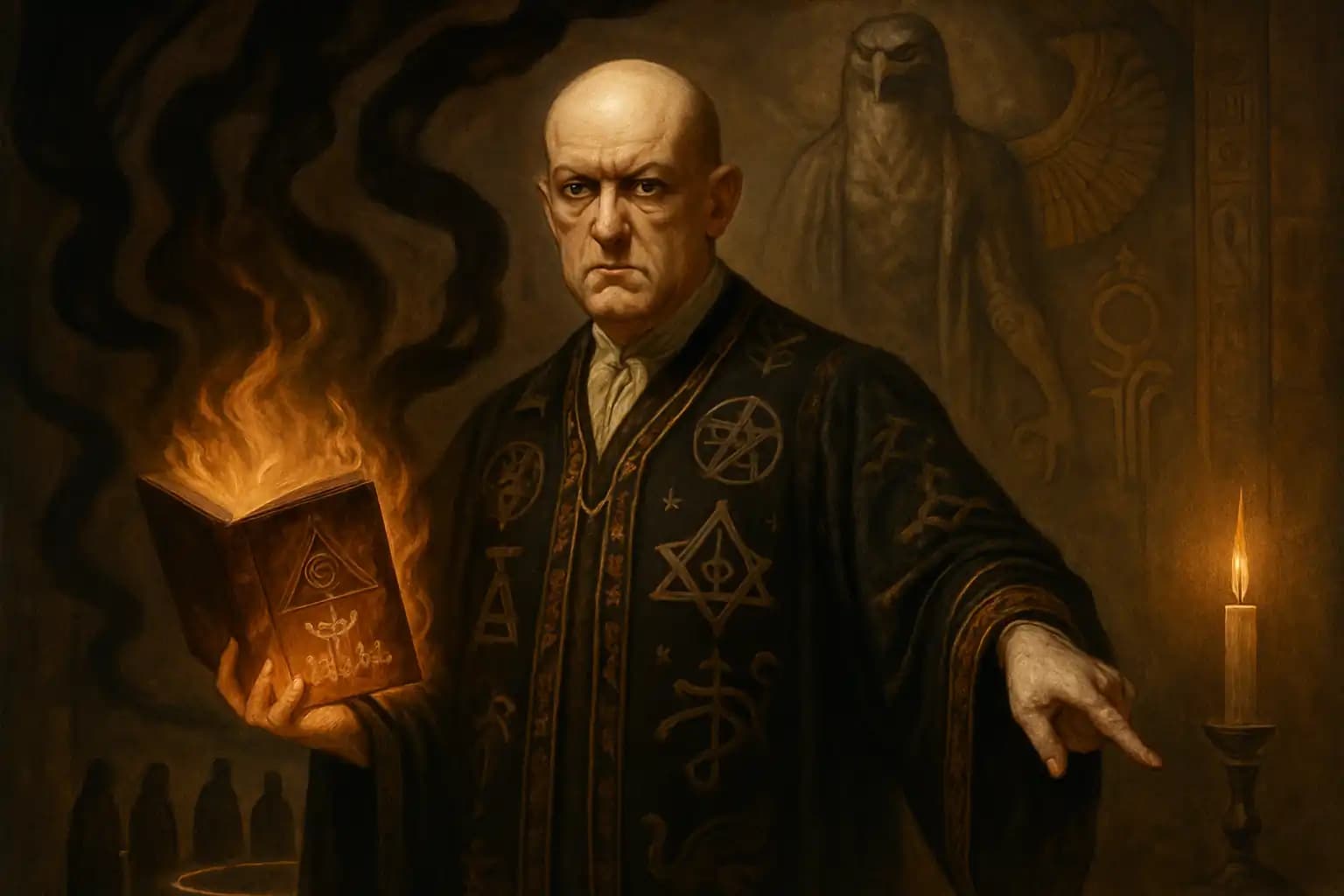Aleister Crowley’s legacy resides not just in dusty books but in the very core of Western occultism. His charisma and controversy make today’s influencers seem subdued. To disciples, Crowley was a prophet and genius. To critics, he embodied the Great Beast of Revelation: a libertine, a manipulator, straddling the line between worlds. Born Edward Alexander Crowley in 1875, he abandoned his strict Christian upbringing for a path to infamy. The tales told about him encompass the improbable: founder of modern occult orders, prophet of a new age, sexual magician, and possibly a secret agent for shadowy societies (Wikipedia).
Crowley’s road to legend started at Cambridge, fueled by poetry, mountaineering, and rebellion. He joined the Hermetic Order of the Golden Dawn, the crux of modern ceremonial magic. His public flirtations with sex magic gave way to a singular focus: creating Thelema, a syncretic faith announced through the supposedly divinely dictated Book of the Law. Crowley didn’t merely entertain occult ideas; he transformed them into acts of world-building. By founding the A∴A∴ and controlling Britain’s Ordo Templi Orientis, he rewrote them in his image. “Do what thou wilt shall be the whole of the Law” became his rallying cry, shocking society and thrilling those seeking liberation from Victorian constraints.
Golden Dawn, Ritual, and the New Occult Order
The Hermetic Order of the Golden Dawn catalyzed Europe’s magic renaissance and forged Crowley’s public persona. Here, he trained under legendary magicians like MacGregor Mathers and Allan Bennett. His charisma fractured the order, instigating lifelong rivalries and drama. Crowley’s obsession with ritual precision and esoteric hierarchies influenced every subsequent occult project, setting unprecedented standards for ambition. As described in this exposé of apocalyptic symbols, the Golden Dawn members dived into cosmic dramas and personal transformation, often with Crowley at their narrative’s dark heart.
The public’s fascination with “dangerous” orders extended beyond Crowley. In upheaval—be it World Wars, nuclear dread, or today’s AI fears—secret societies and coded rituals capture popular imagination. Suspicion, secrecy, and transformation are the very currencies of Crowley’s myth.
The Book of the Law and the Birth of Thelema
In 1904, during his honeymoon in Cairo, Crowley encountered the being Aiwass and received the Book of the Law (Liber AL vel Legis). This singular work remains scripture and code for followers. The Book introduced the infamous dictum, “Do what thou wilt shall be the whole of the Law,” and outlined the dawn of the Æon of Horus—a period of self-realization and magical will. Crowley cast himself as prophet, heralding cosmic change, akin to today’s theorists amid global threats (see this analysis of doomsday escalation).
His new world order transcended abstractions. Through the A∴A∴ and a radical rewrite of the O.T.O, Crowley propagated Thelema worldwide. For his acolytes, this represented liberation; for censors, it signaled moral apocalypse. Debates about the significance of The Book of the Law still ignite curiosity, accessible for public examination (archival edition). The allure of coded prophecy parallels the fascination with lost scripts and forbidden linguistics (explored here).
Sex Magic, Social Scandal, and the Abbey of Thelema
No conversation about Crowley overlooks sex magic and the public horror it sparked. He believed sexual rites unleashed magical energy, summoned gods, and unlocked personal destiny. After founding the Abbey of Thelema in Sicily, he led communal living and experimental rituals—ranging from transcendence to debauchery. The British press exploded in scandal over drugs, partners, and magic. Italy expelled him, enhancing his legendary status.
Crowley’s ambiguous sexuality, drug indulgence, and anti-authoritarian tendencies positioned him light-years ahead of his tabloid adversaries. His life mirrored the cycle where the forbidden, dangerous, and innovative blur together. This dynamic resonates with analyses of prophetic disasters (such as hidden nuclear events), as both evoke dread and allure equally. The Abbey of Thelema served as both a cult archetype and cautionary tale, inspiring countercultural communes and New Age experiments for decades.
Crowley’s Enduring Influence: Counterculture, the Occult, and the Spy Game
Was Crowley a spy? Some biographers argue he spent World War I embedded in pro-German networks in America—feeding information to British intelligence while publicly stimulating German sympathizers. The confusion between Crowley’s public persona and covert activities added layers of intrigue—a form of real-world magical misdirection.
Decades after his death in 1947, Crowley’s iconoclasm echoes widely—from pop music to rituals of modern magic orders, and even in the AI era’s computation-driven logic (unpacked here). His narrative intertwines with societal themes of collapse and resurgence (see parallels here). Crowley stands not merely as an occultist but as a prototype for modern disruptors: part oracle, part incendiary truth bomb, cautioning that in the occult—as in geopolitics—the boundaries of chaos shift perpetually.
Searching for the next cosmic cipher? For more arcane power, hellfire warnings, and shadowy knowledge edges, visit Unexplained.co. History, magic, and the apocalypse begin with questions most fear to ask.





